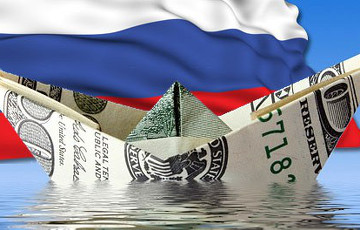Capital Outflow From Russia Has Reached Almost $300 Billion Since War Start
2- 12.04.2025, 4:10
- 4,896

The Kremlin's hopes that “friendly” countries would replace Western investors for Russia have proven futile.
Since the start of the war with Ukraine, the Russian economy has experienced an outflow of foreign capital on a scale it has never seen in its modern history, The Moscow Times notes.
Over three years, non-resident investments in the real sector of the Russian Federation have decreased by 57%, according to statistics published by the Central Bank of the Russian Federation on Friday. Of the $497.7 billion in foreign direct investment (FDI) that businesses had on January 1, 2022, only $216 billion remained by the beginning of 2025 — the minimum amount since 2009.
In the first year of the invasion of Ukraine, which made Russia the world record holder for the number of sanctions imposed, the economy lost $138 billion in foreign investment, and another $80 billion in 2023. Last year, the volume of FDI fell by an additional $63 billion, and the accumulated total for 2022-24 collapsed by $281 billion.
Converted to rubles at the current exchange rate, the economy lost foreign investment worth 24.7 trillion rubles, or 12% of GDP — an amount that exceeds half of Russia's federal budget (41 trillion rubles) and is almost equal to the net annual profit of all Russian companies (30.4 trillion rubles).
The Kremlin's hopes that “friendly” countries would replace Western investors for Russia have proven futile. Although Putin declared “maximum openness” to investors from BRICS countries and called on them to invest “capital” in Russia, the Central Bank’s statistics did not record an influx of money. This indicates the growing isolation of the Russian economy, notes Janis Kluge, a research fellow at the German Institute for International Security Studies.
For example, the authorities of China, Russia’s largest trading partner, relations with which Putin calls “strategic,” have banned local companies from investing in Russia’s oil and gas sector, refused to invest in the Power of Siberia 2 project, and instructed automakers not to build factories in Russia.
Before the war, three quarters of direct foreign investment in Russia was provided by countries on the “unfriendly” list, whose investments ceased after the introduction of sanctions and counter-sanctions. The so-called “enemies” invested an amount equal to 20% of all fixed assets in the extraction of minerals and manufacturing industries, industries that account for 50% of Russia’s GDP and 40% of employment. Their share is even higher in trade (equal to 80% of fixed assets), finance (almost 70%), and also in scientific and technical industries (40%), according to Loko-Invest analysts.
In total, more than a thousand companies — from McDonald’s to Mercedes-Benz — left the Russian market after the war began. And not a single one officially approached with an offer to return, Deputy Finance Minister Ivan Chebeskov admitted in early April. Government officials themselves called foreign top managers with offers to resume work in the Russian Federation, sources familiar with the situation told the Financial Times.











